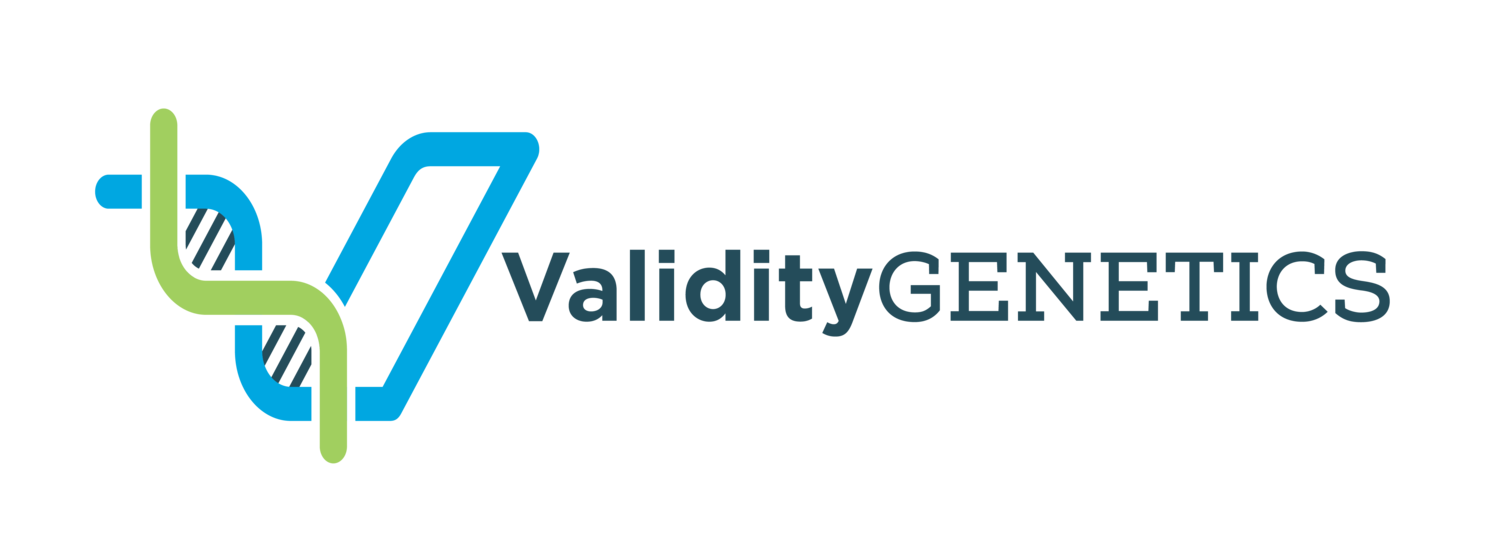The science behind paternity and relationship DNA testing.
Understanding DNA & Its Role in Relationship Testing
What is DNA?
DNA, or Deoxyribonucleic Acid, is the genetic blueprint that makes each person unique. Discovered in 1953, DNA contains over 3 billion nucleotide pairs (A, T, C, and G), which determine genetic traits and hereditary connections. Every person inherits half of their DNA from their biological mother and half from their biological father, making DNA testing the most reliable way to confirm biological relationships.
How DNA Testing Works
In humans, DNA is tightly coiled into structures called chromosomes, found inside nearly every cell nucleus. Each person has 46 chromosomes—22 pairs of autosomes and two sex chromosomes (XX for females, XY for males). To analyze DNA for relationship testing, laboratories extract DNA from a sample and examine Short Tandem Repeats (STRs) at specific locations (loci) on the genome. These markers are unique to each individual and are used to determine biological relationships.
Extracting DNA for Testing: The Science Behind the Process
Step 1: DNA Extraction – Isolating Genetic Material
Illustration showing how the polymerase chain reaction (PCR) produces lots of copies of DNA. Image credit: Genome Research Limited
Extracting DNA from a sample (such as a cheek swab) involves breaking open the cells to isolate the DNA, similar to separating an egg yolk from the egg white. Labs use advanced robotic instruments and specialized chemical processes to ensure a clean and accurate DNA sample.
Step 2: PCR Amplification – Creating More DNA for Testing
The Polymerase Chain Reaction (PCR) is a revolutionary technique that amplifies specific regions of DNA, making millions of copies of the targeted STR loci. Using a thermocycler, DNA is heated and cooled in cycles, allowing the enzymes to duplicate the DNA at the specific markers tested. This method ensures highly accurate and reproducible results.
Step 3: STR Analysis – Matching DNA Profiles
Short Tandem Repeats (STRs) are sections of DNA with repeating sequences of nucleotides. Every person inherits two copies of each STR—one from their mother and one from their father. By comparing STR patterns between tested individuals, laboratories determine the probability of biological relationships.
For reliable results, reputable labs test at least 23 STR markers, ensuring high accuracy in paternity, siblingship, and other relationship tests. Be cautious of services that test fewer markers, as this can impact the test’s reliability.
Understanding DNA Test Results
How DNA Reports Are Interpreted
DNA test results list STR markers and the corresponding number of repeats at each locus. A parent and child must share a percentage of common alleles at multiple loci to be considered biologically related.
Combined Paternity Index (CPI) – Probability of Relationship
The legal verbiage in the results of a DNA test can be confusing.
The Combined Paternity Index (CPI) is a statistical calculation that determines the likelihood of a biological relationship. The CPI multiplies probabilities across all tested markers, generating a probability of paternity or relationship:
0% Probability → The tested person is excluded as the biological relative.
99.9% or Higher → The tested person is included as the biological relative.
Why Choose Our DNA Testing Services?
✔ Accurate & Reliable – We use advanced technology to ensure precise DNA matching.
✔ Confidential & Secure – All samples are processed with strict privacy protocols.
✔ Fast Turnaround Times – Get your results quickly with our high-efficiency testing methods.
✔ Expert Support – Our team is available to answer any questions about your results.
For any questions about paternity, siblingship, or forensic relationship DNA testing, contact us at Info@ValidityGenetics.com.




